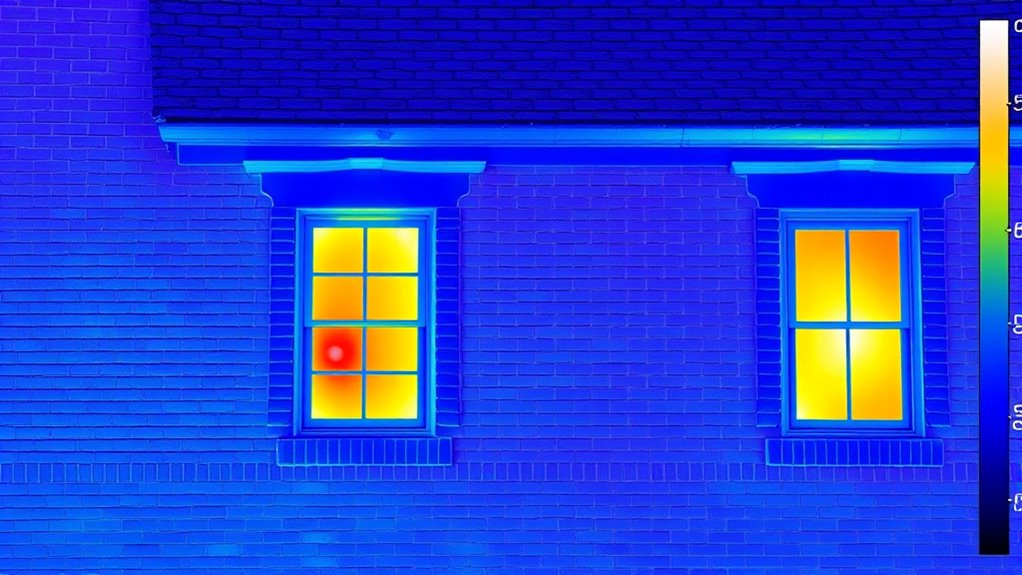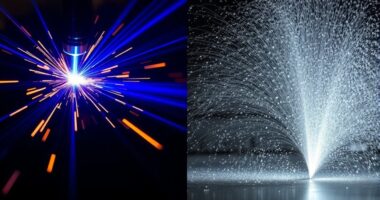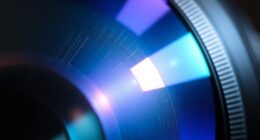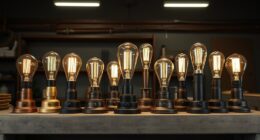Infrared thermography in building inspection helps you spot hidden issues like moisture, insulation gaps, and structural problems using thermal imaging. By detecting temperature differences on surfaces, this non-invasive method shows you damp spots, leaks, and energy loss areas without damage. It allows quick, accurate assessments and confirms repairs’ effectiveness. If you want to understand how this technology works and its full benefits, there’s more to explore that can help you improve building maintenance and safety.
Key Takeaways
- Infrared thermography detects temperature variations to identify hidden issues like moisture, leaks, and insulation problems.
- It provides a non-invasive, quick, and comprehensive method for inspecting building surfaces and structures.
- Thermal imaging reveals moisture intrusion behind walls and ceilings by showing cooler temperature spots.
- The technique helps verify repair efficacy and detect residual moisture or insulation deficiencies.
- Understanding thermal properties of materials enhances accurate interpretation of thermal images and diagnosis.
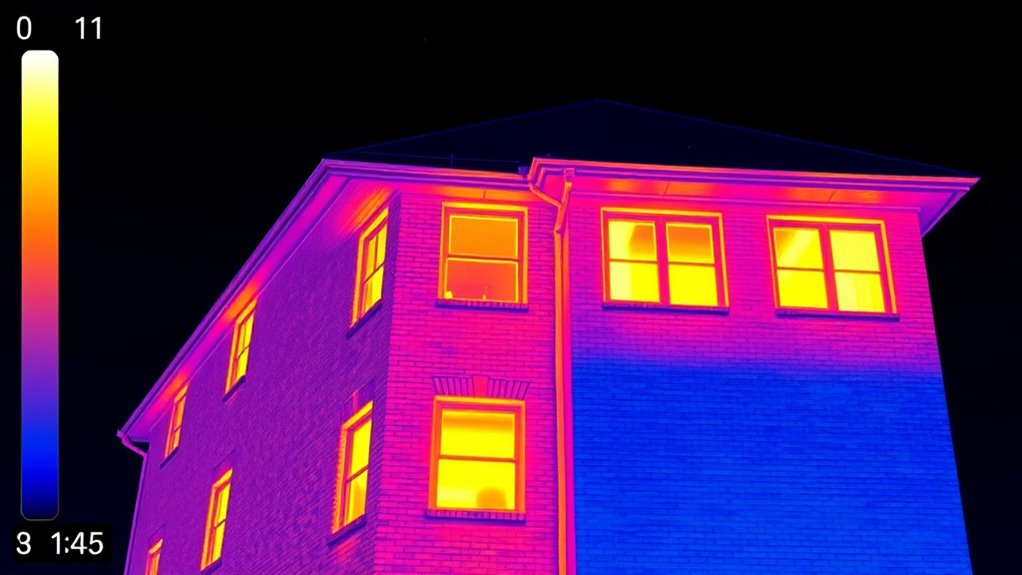
Infrared thermography has become an essential tool in modern building inspections, allowing you to detect issues that are invisible to the naked eye. By using thermal imaging, you can quickly identify temperature variations across surfaces, revealing hidden problems that might otherwise go unnoticed. One of the primary benefits of thermal imaging is its ability to pinpoint areas of moisture intrusion, which is critical for maintaining the integrity of a building. Moisture detection through infrared thermography enables you to see where dampness exists behind walls, ceilings, or floors without invasive methods. This capability saves you time and money by targeting problem areas before they develop into more serious issues.
Infrared thermography reveals hidden moisture issues behind walls and ceilings non-invasively.
When you perform an infrared inspection, you rely on thermal imaging cameras that translate heat patterns into visible images. These images display temperature differences, helping you distinguish between healthy and compromised areas. For moisture detection, you look for cooler spots on the thermal image, as moisture tends to lower surface temperatures due to evaporative cooling or increased thermal conductivity. This contrast makes it easier for you to identify leaks, water intrusion, or mold-prone zones. Moisture often leads to structural damage, mold growth, and reduced insulation efficiency, so early detection is key to preventing costly repairs and health hazards.
Using infrared thermography for moisture detection is particularly effective because it’s non-contact and non-destructive. You can scan large areas quickly, assessing entire walls or roofs without causing disruption. This method provides immediate visual evidence of moisture presence, allowing you to make informed decisions quickly. Additionally, thermal imaging can help you verify the effectiveness of repairs by checking if previously detected moisture has dried out. It also assists in identifying insulation issues, as poorly insulated areas often show abnormal temperature patterns that could indicate moisture or air leaks.
Incorporating thermal imaging into your inspection routine enhances your ability to detect moisture problems early, helping to safeguard the building’s structure and occupants. By understanding the thermal properties of building materials and how moisture affects heat transfer, you can interpret thermal images more accurately. This knowledge allows you to distinguish between different causes of temperature anomalies, ensuring that you address the root of the issue rather than just the symptoms. Overall, thermal imaging is a powerful, efficient tool that improves your inspection accuracy, reduces guesswork, and promotes proactive maintenance.
Frequently Asked Questions
What Are the Limitations of Infrared Thermography in Building Inspection?
You might face cost limitations and equipment constraints when using infrared thermography for building inspection. The high cost of advanced cameras can be a barrier, especially for small projects. Additionally, equipment limitations, such as resolution and sensitivity, can affect accuracy. External factors like weather and surface conditions also impact results, making it essential to comprehend these limitations and plan inspections accordingly to ensure reliable findings.
How Accurate Is Infrared Thermography Compared to Other Inspection Methods?
Like a lighthouse guiding ships through fog, thermal imaging shines a clear light on inspection accuracy. You’ll find infrared thermography highly effective for detecting heat loss, moisture, or electrical issues, often matching or surpassing traditional methods. Its precision depends on factors like equipment quality and operator skill, but overall, it provides reliable, non-invasive insights. While not perfect, it’s a valuable tool that enhances your ability to identify problems early and accurately.
Can Infrared Thermography Detect All Types of Structural Issues?
Infrared thermography can’t detect all types of structural issues because its effectiveness depends on material detection and thermal sensitivity. It excels at identifying thermal leaks, moisture, or insulation problems but might miss internal damage or non-thermal issues. You should combine it with other inspection methods for a thorough assessment. Remember, its accuracy varies based on material properties and temperature differences, so use it as a valuable tool alongside traditional techniques.
What Training Is Required to Operate Infrared Thermography Equipment?
Wondering what training you need to operate infrared thermography equipment? You’ll typically require certification to guarantee you meet industry standards and understand safety protocols. You also need to develop equipment proficiency by gaining hands-on experience with different devices and techniques. This training often involves coursework, practical sessions, and exams to verify your skills. Are you ready to pursue certification and become confident in using this valuable tool?
How Does Weather Affect Infrared Thermography Measurements?
Weather conditions considerably affect infrared thermography measurements. You’ll notice that temperature fluctuations caused by wind, rain, or humidity can create inaccurate readings. On windy days, heat transfer from air movement can distort thermal images, while moisture from rain or dew affects surface temperatures, making it harder to detect issues accurately. To get reliable results, you should perform inspections during stable weather conditions with minimal temperature fluctuations.
Conclusion
By using infrared thermography, you can quickly identify hidden issues like leaks or insulation gaps, saving you time and money. Imagine spotting a tiny hotspot on a wall that reveals a hidden moisture problem before it causes major damage. Did you know that infrared inspections can detect temperature differences as small as 0.1°C? This precision helps you maintain safer, more energy-efficient buildings, making thermography an indispensable tool in modern inspections.
